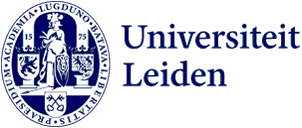
‘Dear Aunt Olga’ exhibition on the ties between Suriname and the Netherlands
The Surinamese-Dutch language, Parbo Beer and, of course, football. The ‘Dear Aunt Olga’ (‘Lieve tante Olga’) exhibition focuses on the shared Surinamese-Dutch culture. Full of cheer and with life experience to spare, ‘icon’ Aunt Olga (95) leads visitors through a shared history and does not shy away from its more uncomfortable chapters. The exhibition can be seen and heard in the Old UB as of today.
Slavery and colonialism have left deep marks on the shared history of Suriname and the Netherlands. ‘The ties between the two countries were unequal but are now unbreakable because of the many people with Surinamese roots living in the Netherlands alone’, says Fresco Sam-Sin, Director of the Language Museum, initiator of the exhibition and grandson of ‘Aunt’ Olga.
‘Aunt Olga is a heroine. She has white skin but is 100 per cent Surinamese. She carries that whole moksi patu, that melting pot, within.’
Aunt Olga is one of the many Surinamese who came to the Netherlands after the war. She is the embodiment of the past, says Sam-Sin. ‘Aunt Olga is a heroine. She has white skin but is 100 per cent Surinamese. She carries that whole moksi patu, that melting pot of Jewish roots and West African and indigenous blood, within. With how she is and how she looks, she challenges people to think about how complex and un-black-and-white our shared history is.’
Doing fine
This complexity is also reflected in Surinamese Dutch, a combination of Sranantongo and sometimes old-fashioned Dutch. Doks (rather than eend) is a duck, directoire (rather than slipje) a pair of knickers and tandenschuier (rather than tandenborstel) a toothbrush. ‘But some phrases also have different meanings,’ Sam-Sin says. ‘If I ask my grandmother how she is, she often answers: “Het gaat”. I used to think this meant there was something wrong and she wasn’t feeling well or something. But I now know she means she’s doing fine. So the meaning of that one phrase “Het gaat” is slightly different in Surinamese-Dutch.’
Aunt Olga sings in two languages
Due to the selected cookie settings, we cannot show this video here.
Watch the video on the original website orOfschoon, buitendien, sedert: these are words you won’t hear young people in the Netherlands using. But they are still widely used in primary schools in Suriname, says Sam-Sin. ‘They’re considered old-fashioned now, something that can still make my grandmother really cross. All the outdated and discarded textbooks from the 1940s and 1950s were sent to Suriname.’
Suriname’s most famous medicine
As well as the videos and sound clips about the common language, the exhibition also includes 23 objects with a shared history. For example, there is a cup made of kwasibita, bitterwood, Suriname’s most famous medicine. ‘That medicine came from a Mr Kwasi, whose role in history is also tricky. He was an enslaved man who became very famous in the colony because he hunted down Maroons (people who had escaped slavery and formed free settlements or their descendants, ed.)’, says Sam-Sin.
Aunt Olga talks about the pride of Suriname: Parbo Beer
The 1989 cover of Voetbal International (Football International) is also among the objects on display. A photo shows a downcast Ruud Gullit and Frank Rijkaard with the headline below: ‘Dutch football cries’. On 7 June of that year, a plane crashed near Zanderij Airport, Paramaribo’s airport, killing 176 passengers, including 14 Surinamese-Dutch pro footballers.

Aunt Olga takes visitors on an audio tour of these shared objects, some of which come from the dark period of slavery and colonialism. ‘Aunt Olga is extremely aware of that history but there is a lightness to her telling’, says Sam-Sin. ‘By sharing anecdotes, she manages to make some of the stories seem less heavy. She helps visitors think about how we can deal with the past in a positive way.’
Ugly history, rich culture
‘I hope visitors will discover how interlinked Surinamese and Dutch history are. It is good to reflect on this, especially now during Slavery Memorial Year. As well as understanding the ugly part of that history, we should be proud of the rich culture that these links have produced: the food, the music and the language; these should be enjoyed.’
Dear Aunt Olga opens on 27 September in the hall at Oude UB and will run until 29 December. The exhibition is the result of a collaboration between the Language Museum and Things That Talk.
Text: Tim Senden
